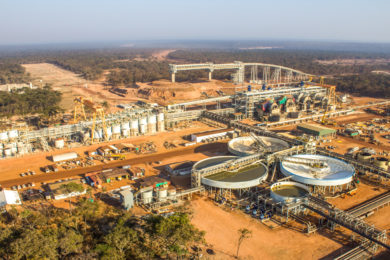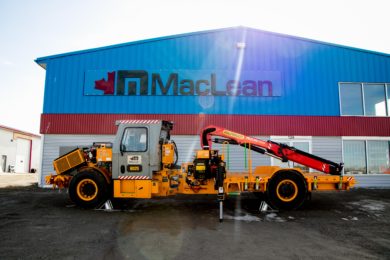First Quantum Minerals (FQM) is pioneering an ambitious solar and wind energy project that it hopes will provide stable power for its Zambia operations on a long-term sustainable basis. While the ambitious project is still in its early stages, the mining giant is confident the proposed development will be one of the most significant renewable energy projects in Africa. The 430 MW project is expected to consist of a 230 MWp solar photovoltaic (PV) plant and a 200 MW wind farm to supply power to FQM’s operations Kansanshi mine in Solwezi and Sentinel mine in Kalumbila. Construction is expected to start next year.
The circa $500 million project will be developed, financed, built and operated by Total Eren, a leading France-based renewable energy Independent Power Producer (IPP), and Chariot Transitional Power, the African focused transitional energy group. It will be funded leveraging non-recourse project finance debt.
FQM’s Kansanshi Mine General Manager Anthony Mukutuma said: “The project will offer significant benefits to Zambia, by unlocking some of its world-class renewable potential. It will help the country realise some of its untapped solar and wind resources by attracting large-scale foreign investment and adding significant renewable energy capacity. In line with Zambia’s Vision 2030, the project will further contribute to improving Zambia’s energy-mix, reducing expensive regional power imports and exposure to fuel prices.”
While the company’s operations are already powered by approximately 80% renewable energy through a longstanding and ongoing relationship with state electricity supplier ZESCO – and which is expected to remain an important partner for the future – First Quantum also delivers significant greenhouse gas emissions savings – around 100,000 t CO2e in 2020 – through the successful implementation of mining technology that leverages this renewable power.
The new project would complement and expand Zambia’s existing renewable energy capacity to provide First Quantum with competitive and sustainable power for its Zambian mining operations, while delivering on the company’s commitment to decarbonisation. However, increasing pressure on Zambia’s existing hydroelectric resources together with increased risk of supply disruption as a result of drought has highlighted the need to diversify Zambia’s power supply while maintaining the current low emissions.
Major projects such as this underline First Quantum’s responsible mining credentials and are a critical part of its plan to reduce its carbon footprint by 30% by 2025, added Mukutuma.
Total Eren’s EVP and Global Head of Business Development Fabienne Demol said: “Together with our partner Chariot, we are pleased to bring our global expertise in solar and wind generation to power FQM’s operations. The combined solar and wind capacity will offer strong complementarity and power generation around the clock, with solar produced during the day and wind mainly at night. The project also represents a natural fit with Zambia’s hydropower resource seasonality; the project’s energy mix reaches its production peak during the dry season when the country is most exposed to droughts. Increasing the share of renewables will improve the country’s carbon footprint and address current and future challenges related to climate change.”
Total Eren is affiliated to TotalEnergies, the major energy company. In Zambia, TotalEnergies has more than 71 years of operations. The company’s ambition is to provide affordable, reliable, and cleaner energy in order to meet the ever-growing Zambian demand.
Chariot Transitional Power Executive Director Laurent Coche said: “We are very excited to be partnering with FQM and Total Eren on this ground-breaking 430 MW project in Zambia. This project further demonstrates Chariot’s commitment to assisting mining companies in Africa transition to renewable energy sources for their operations, with Zambia having an abundance of wind and solar potential. We are delighted to get started on the project, ahead of construction commencing in 2023, and we look forward to providing further updates in due course.”










